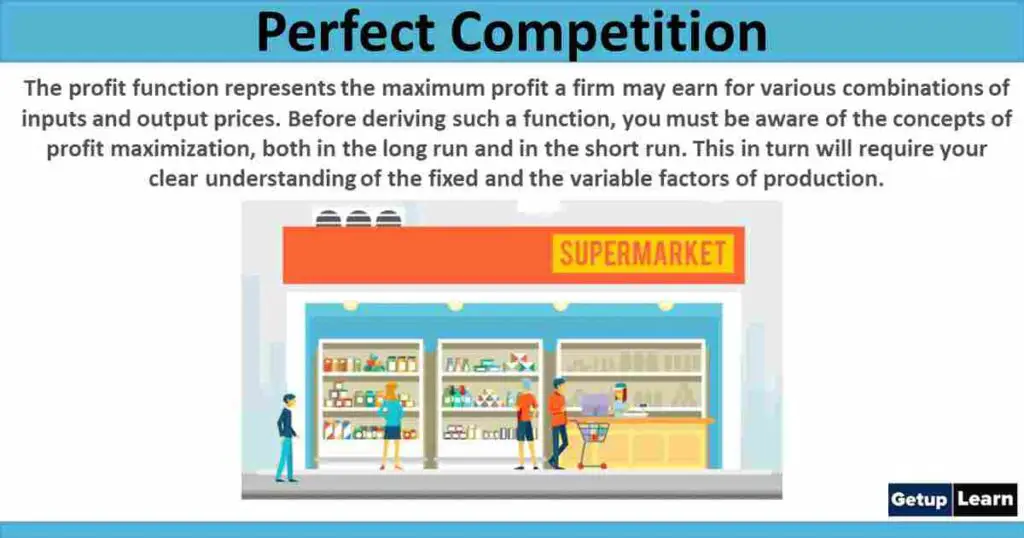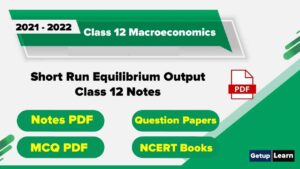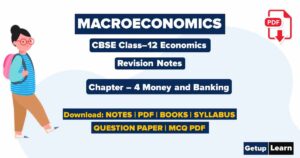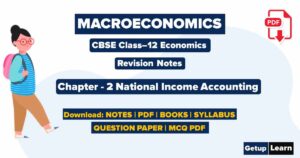Table of Contents
What is Profit Function?
The profit function represents the maximum profit a firm may earn for various combinations of inputs and output prices. Before deriving such a function, you must be aware of the concepts of profit maximisation, both in the long run and in the short run. This in turn will require your clear understanding of the fixed and the variable factors of production.

Table of Contents
Fixed and Variable Factors
You are already familiar with the idea of fixed and variable factors of production. The fixed factor of production is present in fixed amounts, at least in the short run, like building, machines, etc. On the other hand, a variable factor can be used in different amounts even in the short run, for instance, labour, raw materials, etc.
In the short run, firms can vary only the variable factors of production, whereas in the long run, all factors of production can be varied, i.e. all factors become variable in the long run.
Thus, the short run and the long run time period is something which is defined by the extent and the timeliness of the variability of factors of production. Factors that could not be varied for a specific amount of time period, define the extent of short run time span for that firm to that extent of the time period.
The presence of Fixed factors in the short run creates the possibility of a firm earning negative profits in the short run. This is because, even if the firm decides to produce no output, it has to employ and pay for some fixed factors in the short run.
But, in the long run, all factors become variable, this makes it possible for a firm to go out of business, i.e. produce no output and thus reduce its cost to zero, and earn zero profits.
Short Run Profit Maximisation
Consider a production function for a firm given by:
Q=f (Q = f (K , L)
Here, Q represents the amount of output produced, K and L are the two factors of production. Bar over input K signifies that it is fixed at a level, i.e., K = K. Further let P be the price of the output Q, and let r and w be the prices of the factors K and L, respectively. We assume P, w and r as given.
Total Revenue (TR) equals Price × Output: TR = P × f (K, L)
Total Cost (TC) is the cost incurred on employment of factors K and L at respective rates of r and w: TC = rK + wL
Profit (π) will be given by TR – TC. Thus, the short-run profit maximisation problem becomes: Maximise π = Pf (K , L) −rK − wL
Long Run Profit Maximisation
In the long run, all inputs become variable for the firm. Thus, the production function faced by the firm becomes: Q = f (K, L)
As you may notice here, K does not have a bar on top, indicating it could be varied, just like factor L, by the firm. Now, the long-run profit maximisation problem will be given by
Maximise: π =Pf (K, L) –rK − wL












